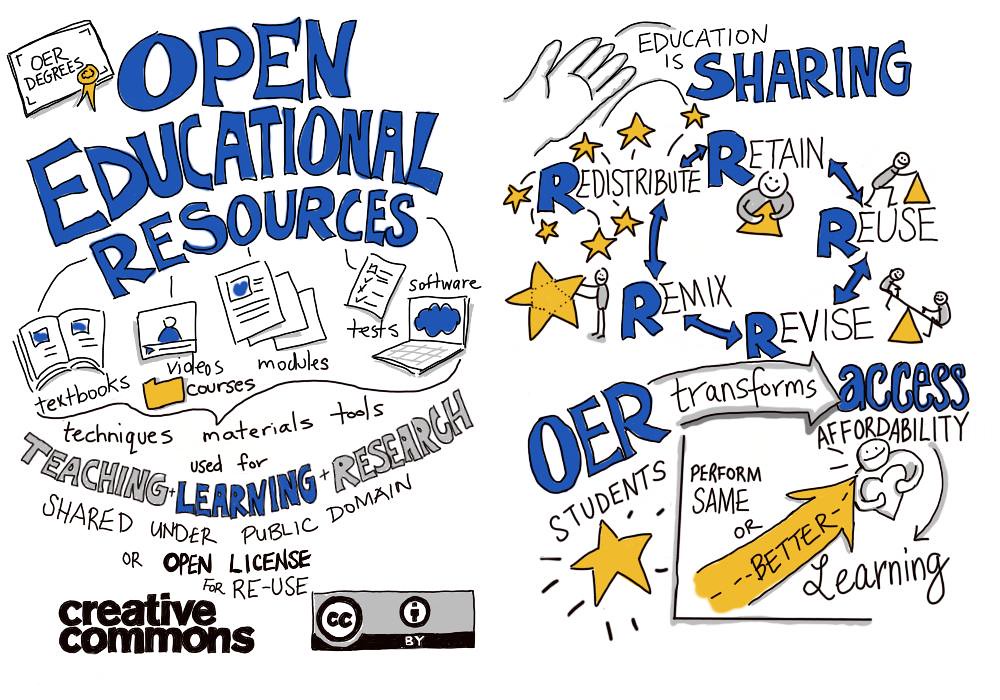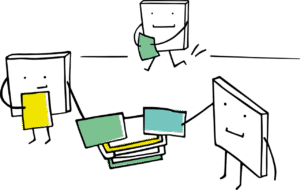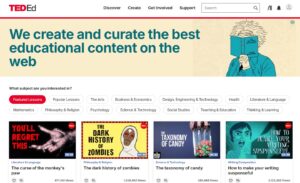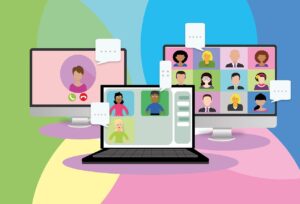Today, I wrote an entire post, about all the loose ends in my learning project that I may have left everyone hanging with. Classically, I had not saved and my daughter was making an automatic cat feeder out of cardboard. She unplugged the computer to plug in her glue gun and alas! everything was lost. I could cry. (Why is there not an autosave version history to go back on like I have to utilize for my Grade 5 students when they accidentally erase their entire assignment.) So here is the Coles Notes version.
- What happened to the SCOBY I was growing?
- Did I ever hear back from the woman on Facebook who was going to offer me a SCOBY?
- What did you think of the course I paid for versus open education?
- Did I ever receive the Hoochy Booch Kombucha Kit?
- How did the Kiwi and Lime second ferment trial turn out?
Trial, Error, and a Little Research
 As you may recall I watched a TikTok video that was shared to YouTube. This video in a few short moments gave me the inspiration that I could grow my own SCOBY. What I failed to account for was that she set up the initial steps but did not provide the process or results. As a result I questioned whether my SCOBY was viable. It looked terrible, smelled and tasted like apple cider vinegar. After watching another TikTok, that unfortunately I can no longer locate, I decided to compost my SCOBY. This week, I went on a quest to learn what I had done wrong, and this video linked below actually confirmed that I was going in the right direction. Do you want to see me grow another SCOBY from scratch?
As you may recall I watched a TikTok video that was shared to YouTube. This video in a few short moments gave me the inspiration that I could grow my own SCOBY. What I failed to account for was that she set up the initial steps but did not provide the process or results. As a result I questioned whether my SCOBY was viable. It looked terrible, smelled and tasted like apple cider vinegar. After watching another TikTok, that unfortunately I can no longer locate, I decided to compost my SCOBY. This week, I went on a quest to learn what I had done wrong, and this video linked below actually confirmed that I was going in the right direction. Do you want to see me grow another SCOBY from scratch?
Community, Curiosity, and Kombucha Connections
 Initially I set out with the intent to find a SCOBY by reaching out on Facebook to find one locally. I was able to connect with a colleague, Madison who generously shared her knowledge with me. The SCOBY she shared looks the healthiest. This week I went over to her house to return a flip top bottle she had loaned me when I tried the second ferment that she had prepared. She also shared some tips this week that if I wanted to increase fermentation I could also decrease the amount of space in the top of the flip top bottle. I was curious if she burped her kombucha and she said that initially she had but did not anymore. Pictured here are two bottles I brewed of the second ferment last week from her starter tea/SCOBY. I was a little concerned that a new SCOBY was forming on the top of my second ferment, however an email newsletter from Revolution Fermentation link to this post confirmed that in fact that means that the brew is strong and healthy. You may have recalled that another woman, a registered nurse, in the city was referred to me on Facebook; her SCOBY had not been ready at the time. I followed up with her this week to acknowledge her offer of a SCOBY and to let her know that I would no longer need one. I also inquired whether she would be willing to share the health benefits of kombucha and how drinking kombucha has improved her health. I am waiting to hear. If any readers have experienced health benefits do share in there comments, as I am curious to learn more about how probiotics and fermentation affect our health.
Initially I set out with the intent to find a SCOBY by reaching out on Facebook to find one locally. I was able to connect with a colleague, Madison who generously shared her knowledge with me. The SCOBY she shared looks the healthiest. This week I went over to her house to return a flip top bottle she had loaned me when I tried the second ferment that she had prepared. She also shared some tips this week that if I wanted to increase fermentation I could also decrease the amount of space in the top of the flip top bottle. I was curious if she burped her kombucha and she said that initially she had but did not anymore. Pictured here are two bottles I brewed of the second ferment last week from her starter tea/SCOBY. I was a little concerned that a new SCOBY was forming on the top of my second ferment, however an email newsletter from Revolution Fermentation link to this post confirmed that in fact that means that the brew is strong and healthy. You may have recalled that another woman, a registered nurse, in the city was referred to me on Facebook; her SCOBY had not been ready at the time. I followed up with her this week to acknowledge her offer of a SCOBY and to let her know that I would no longer need one. I also inquired whether she would be willing to share the health benefits of kombucha and how drinking kombucha has improved her health. I am waiting to hear. If any readers have experienced health benefits do share in there comments, as I am curious to learn more about how probiotics and fermentation affect our health.
Paywalls, Podcasts, and Paths to Learning
From the Revolution Fermentation website, I paid for an online class with Sebastien Bureau. This week I rewatched it to see if perhaps I had missed some content. I am proud to report that I better understand the process more and am able to take the content and see how I might be able to refine my process from ratios of sugar to water, to grams of loose leaf tea to water. Previously I had been using tea bags so I want to try loose leaf teas. A take away from rewatching this course was that green tea pairs better with herbs and black tea pairs better with fruit. In reflecting on this course, shared as a video on Vimeo that is less than 12 minutes long, I feel as though the content is readily available online. The video is professionally filmed and edited and is an enjoyable view however I feel as though there are many content creators that share similar content for free. For instance, here is a video series from Bon Appetite featuring Brad Leone that is fun to watch and you can easily spend an entire evening as I have watching him chop fruit and brew up some interesting concoctions. I would have liked to have seen a second video in the course from Revolution Fermentation that takes us beyond ground zero of start-up and offers what comes next. That is where my questions really began. If you enjoy podcasts here is a podcast I listened to this week, featuring Sebastien Bureau, from Montreal, who takes some wonderful tangents including picking mushrooms.
When Learning Arrives By Mail
 I had almost given up on ever receiving the Hoochy Booch kit. With the postal strike I had not been regularly checking my mail. But then why would I when I had confirmed that I paid $17.15 for express shipping on September 21st. On October 19th after visiting the mail a few times in the days before I found a parcel key in my mail box and there was the Hoochy Booch Kit. I brewed it up and today marks 14 days since I made the first brew so I should actually start the second ferment. The pH strip also says 3.0 so it is ready. The kit is cute. A final criticism I have of this company however is that there are several mentions to remember to open my follow up emails. There are none.
I had almost given up on ever receiving the Hoochy Booch kit. With the postal strike I had not been regularly checking my mail. But then why would I when I had confirmed that I paid $17.15 for express shipping on September 21st. On October 19th after visiting the mail a few times in the days before I found a parcel key in my mail box and there was the Hoochy Booch Kit. I brewed it up and today marks 14 days since I made the first brew so I should actually start the second ferment. The pH strip also says 3.0 so it is ready. The kit is cute. A final criticism I have of this company however is that there are several mentions to remember to open my follow up emails. There are none.
Tasting What I’ve Learned
Last week, we scaled back flavours to the kiwi and lime after watching a YouTube video where the creator tested various variables in an attempt to increase carbonation. I used the lime recipe from this video, waited the seven days to ferment. I also did some calculations last week to control the amount of sugar in the kiwi kombucha to match the sugar grams in the lime. While I tried to reduce the amount of pulp in the kiwi by straining it I still managed to include some pulp. Watch the video vlog below, we made this morning, to see how this second ferment went.





 The logo TED Ed on the left hand side functions intuitively as Home in the Menu bar.
The logo TED Ed on the left hand side functions intuitively as Home in the Menu bar. On the main home page users can search by subject. Each subject (Arts) further has a sub menu (Visual Arts, Performing Arts, Value of the Arts, Back). Subjects can be filtered by level (elementary/primary, middle school/lower secondary, high school/upper secondary, college/university), content type (animation, lesson, best of web) , video duration and subtitles (language). Subjects can also be sorted by options like featured, popular, newest, oldest etc. This makes content easy to find, narrow what viewers need, and help them locate relevant materials. It allows for flexibility and a the ability to control content. It can also support different learning goals and increase accessibility for multilingual learners.
On the main home page users can search by subject. Each subject (Arts) further has a sub menu (Visual Arts, Performing Arts, Value of the Arts, Back). Subjects can be filtered by level (elementary/primary, middle school/lower secondary, high school/upper secondary, college/university), content type (animation, lesson, best of web) , video duration and subtitles (language). Subjects can also be sorted by options like featured, popular, newest, oldest etc. This makes content easy to find, narrow what viewers need, and help them locate relevant materials. It allows for flexibility and a the ability to control content. It can also support different learning goals and increase accessibility for multilingual learners.
 Occasionally I have used
Occasionally I have used 

